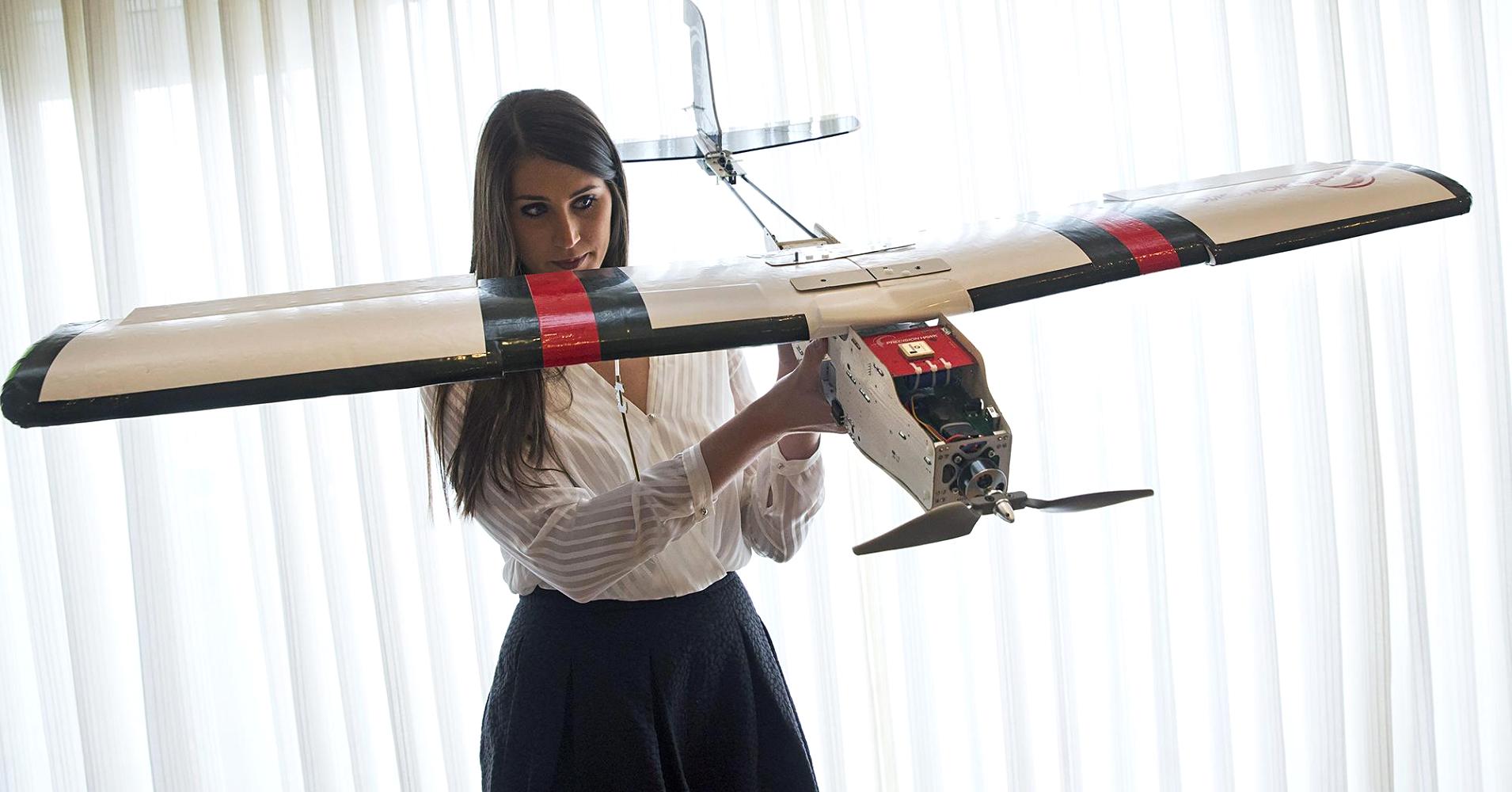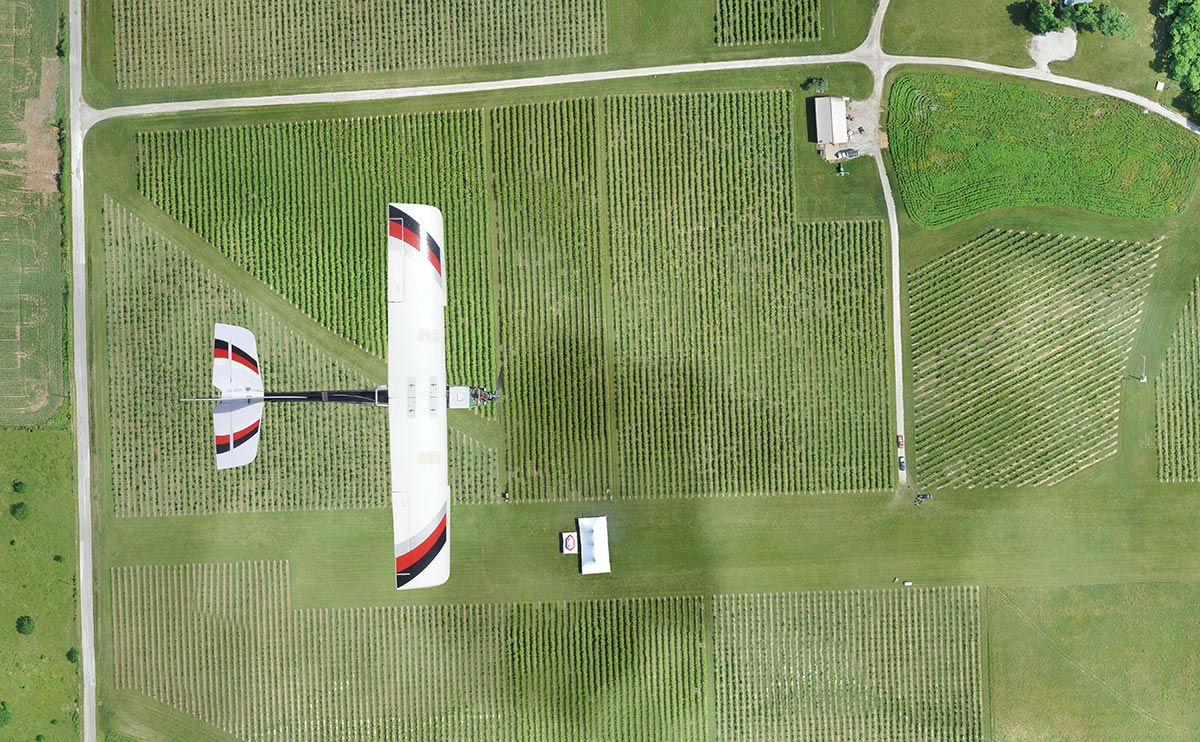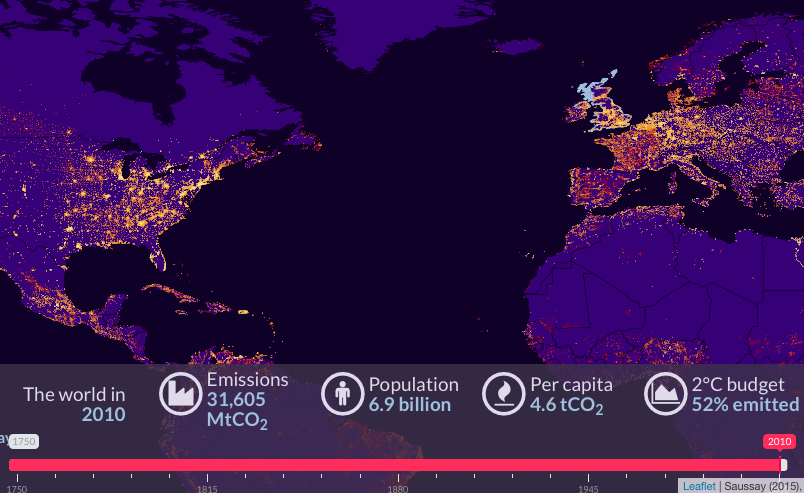Every morning when I get to work, my inbox undoubtedly contains a Google alert. Yes! Another ‘drone’ mention has flown into cyberspace. The technology is just… cool, to put it plainly. Flying robots, many of which are completely autonomous (aka don’t need a remote controller,) delivering our kindles and saving our lost children. It all sounds like a concept from a sci-fi book; however, with the boom of UAV information comes the boom of questions.
From the outside looking in, people want to know more. How will drones affect my daily life and privacy? Can UAVs help my business operate more efficiently and productively? The media has done a fairly good job, over the past year, in particular, answering these questions and the millions of others that tech gurus, farmers and your average citizens alike want to know.
I want to share with you how things are from the inside looking out. I am employed by PrecisionHawk, an UAV and remote sensing company based in the US and Canada. For us, and others in our field, things are looking up in a big way. Doors are swinging open and investment money is flowing in across the board, but this would not be a technology market without some roadblocks.

This is a market based on constant updates and artificial intelligence beyond the norm, so I have no doubt these issues will dissipate and others will arise in the near future.
That being said, every UAV company is not created equal, and I’m not referring to hobbyist UAVs. I’m talking about platforms that collect the quality of data that will better our markets and economies. We all face different R & D obstacles depending on size of the platform, fixed-wing or quad-copter, sensor types we carry and desired target markets, but I’m trying to generalize and simplify some of the top problems, the collective, ‘we’ are facing.
1. DO YOU LIKE ME?
What’s particularly concerning about drones is that they bring all of the surveillance tools that police use into one piece of technology.
Trevor Timm, an activist with the Electronic Frontier Foundation, which sued the federal government for more information on domestic use of unmanned aerial vehicles.
In terms of the civil rights activists, ethicists and worried civilians, we are still fighting a bit of a battle. This technology will change a culture. We are talking about growth to a potential 10 billion dollar industry over the next three years. Already 24 states have battled for the first piece of the pie, recently six of those states were named UAV test sites, which means significant economic impact, including jobs. Still, the widespread citizen sentiment seems to be a big question mark, not good, not bad, but 100 percent rooted in a lack of information. Our job, as UAV activists- entrepreneurs, aerospace engineers and environmentalists, to name a few of our previous occupations- is to convince you readers, and the rest of the country, that the impact we’re seeing in the field and with our clients on the day to day makes us sure that this is a positive technological advancement for the US.
This year, a couple in San Diego created the first part in a series about the civilian uses of drones. Instead of telling you why drones are great, they told a story of search and rescue. I was on a call with them a few months back talking about this topic and they said, (and I paraphrase),“We want to shed light on the people. People need to see how UAVs will affect their lives. You can tell the story of agriculture and that UAV remote sensing technologies will create higher yield and feed more people, but you have to show the food on our dinner tables.”
We may not have full support yet, but I think anytime you have activity like Amazon’s delivery drone announcement, it shows that people are definitely aware of UAV technology and, most importantly, they are becoming more comfortable with it. That level of comfort is important because there are a lot of industries out there that can use this technology. They simply need to be open to exploring it.
2. IT’S JUST TOO SMALL
Up until now sensors, like the hyperspectral sensor, were huge, needed very expensive systems to fly in and were very difficult to process. Now we have this very small aircraft, just a couple of pounds, and we have integrated these types of sensors that allow for very specific data collection.
Dr. Ernest Earon, PrecisionHawk Founder
What is it that UAVs are replacing in the market? We traditionally have seen our competition as manned aviation and satellites because those are the only other technologies that have been able to provide a similar level or data to what we provide, and if you’re talking about agriculture we’re also talking about things like tractor based remote sensing. Some sensors are just heavy. Hyperspectral sensors that depict over 100 channels of light in order to uncover problem areas invisible to the human eye and Lidar sensors that perform topographic analysis, especially where vegetation exists, worked great for heavy and expensive carrier mechanisms (manned helicopters and planes). Need to get them in the air on a UAV lighter than 55 pounds… forget it!

The problem with this is that the ability to collect data in a wide variety of spectral bands is what clients want. To use agriculture as an example, these types of spectral bands let you see things like crop stressors, diseases and pathogens. If agriculture is supposed to take up 80 percent of the booming marketplace, someone has to figure out how to make big sensors small. Thanks to a rockstar research and development team, PrecisionHawk figured it out for the two sensors I mentioned above, but new sensors with even higher resolution and crazier applications are coming out. UAV engineers across the space will need to integrate and make them work in order to stay on top of customer demands.
3. SHOW ME THE MONEY
The date that people talk about is 2015. The expectation is that opening of US airspace will have a very, very big impact financially for a lot of companies and certainly, with no except, ours.
Christopher Dean, PrecisionHawk CEO
The number one question that I get asked is how FAA regulations are impacting us from a business side. So… how do you guys make money? Brilliant question! Well there’s nothing stopping you from buying a UAV, but for those of you who don’t know, the regulations for actually flying them in the US are strict. There are two ways to fly UAVs. Get a Certificate of Authority (COA) from the FAA, this is not easy to obtain, or follow guidelines that include flying under 400 feet, over private property and within line of site.

Right now the solution for this problem is to go global or partner with a university. Countries in Asia have been doing unmanned aviation for decades, and currently South America, Canada, Australia and the UK are exploring the possibilities in their industries as well. In February, PrecisionHawk is traveling to Brazil to do test flights so that one day soon we can be collecting data that will tell the government how to better preserve Patanal, one of the world’s largest topical wetland reserves. I say that to make the point that countries all over the world are looking at how they can use drones. The market is big and growing and the US has fallen behind.
Teaming up with a university to capitalize on research happening through grants is a great way for UAV companies to test their platform in the US. Universities have special privileges granted by the FAA. The challenge here is to select the best universities to partner.
These three issues are just the tip of the iceberg. There are numerous other considerations that one should think about when planning to get a drone. What is infinitely clear, however, is the fact that drones are becoming more and more a part of daily industry processes and with investors both big and small pouring their money into drone start-ups, we can look forward to more markets opening themselves up for drones.











